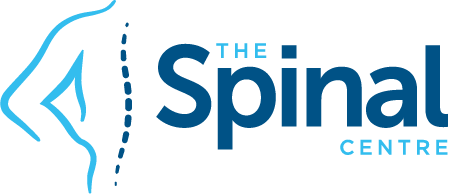
Addition of a Sagittal Cervical Posture Corrective Orthotic Device to a Multimodal Rehabilitation Program Improves Short- and Long-Term Outcomes in Patients with Discogenic Cervical Radiculopathy
PUBLISHED: Arch Phys Med Rehabil. 2016 Dec;97(12):2034-2044. doi: 10.1016/j.apmr.2016.07.022. Epub 2016 Aug 27. Pub Med: https://www.ncbi.nlm.nih.gov/pubmed/27576192
AUTHORS: Moustafa IM, Diab AA, Taha S, Harrison DE.
Basic Science Department, Faculty of Physical Therapy, Cairo University, Giza, Egypt.
Chiropractic BioPhysics NonProfit, Inc., Eagle, ID.
.
OBJECTIVE: To investigate the immediate and 1-year effects of a multimodal program, with cervical lordosis and anterior head translation (AHT) rehabilitation, on the intensity of pain, disability, and peripheral and central nervous system function in patients with discogenic cervical radiculopathy (CR).
DESIGN: A randomised controlled trial with 1-year and 10-week follow-up.
SETTING: University research laboratory.
PARTICIPANTS: Patients (N=60; 27 men) with chronic discogenic CR, a defined hypolordotic cervical spine, and AHT posture were randomly assigned to a control group (n=30; mean age, 43.9±6.2y) or an intervention group (n=30; mean age, 41.5±3.7y).
INTERVENTIONS: Both groups received the multimodal program; in addition, the intervention group received the Denneroll cervical traction device.
MAIN OUTCOME MEASURES: AHT distance, cervical lordosis, arm pain intensity, neck pain intensity, and disability (Neck Disability Index [NDI]), dermatomal somatosensory evoked potentials (DSSEPs), and central somatosensory conduction time (N13-N20). Measures were assessed at 3 time intervals: baseline, 10 weeks, and 1-year follow-up.
.
RESULTS: After 10 weeks of treatment, between-group analysis showed equal improvement in arm pain intensity (P=.40), neck pain intensity (P=.60), and latency of DSSEPs (P=.60) in both intervention and control groups.
However, also at 10 weeks, there were significant differences between groups, favoring the intervention group for cervical lordosis (P<.0005), AHT distance (P<.0005), amplitude of DSSEPs (P<.0005), N13 to N20 conduction time (P<.0005), and NDI (P<.0005). Although at 1-year follow-up, between-group analysis identified a regression back to baseline values for the control group.
Thus, all variables were significantly different, favoring the intervention group at 1-year follow-up: cervical lordosis (P<.0005), AHT distance (P<.0005), latency and amplitude of DSSEPs (P<.0005), N13 to N20 conduction time (P<.0005), intensity of neck and arm pain, and NDI (P<.0005).
CONCLUSIONS: The addition of the Denneroll cervical orthotic device to a multimodal program positively affected discogenic CR outcomes at long-term follow-up.
We speculate that improved cervical lordosis and reduced AHT contributed to our findings.
The Spinal Centre – Neuro-Musculoskeletal SolutionsThe Spinal Centre provides the Best Natural Medicines, Health Products and Nutritional Solutions to Free You of Pain and Improve Your Spinal Health.The Spinal Centre is a leader in the management and treatment of spinal pain and disability including:
- Chronic Back and Neck Pain
- Cervical and Lumbar Disc Injuries with or without neruological changes
- All forms of arthritis including rheumatoid arthritis, psoriatic arthritis and osteoarthritis
- Neurodegenerative diseases such as Parkinson’s and Alzheimer’s disease
- Neuromuscular problems such as chronic back pain, headaches, migraines, neck or spinal pains
- Myofascial pain syndromes such as fibromyalgia, diffuse muscular or joint pains
- Austistic spectrum disorders including ADD, ADHD, learning difficulties and autism
- Fatigue, energy and mood disorders including chronic fatigue and depression
The Spinal Centre focuses on resolution with the development of individualised treatment programs using Conservative and Integrative Medicine; combining genetic, metabolic and nutritional testing with specific natural medicines to enhance your health and achieve your genetic potential.We have helped thousands – Why Not You?





